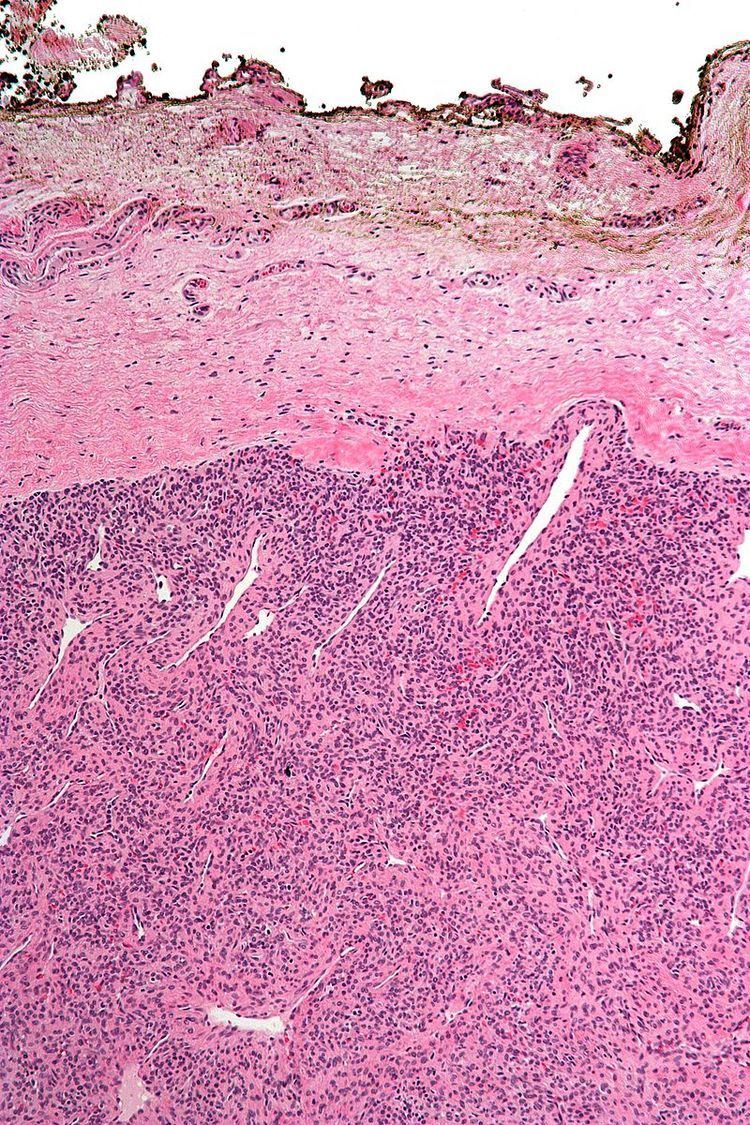 | ||
A resection margin is the margin of apparently non-tumerous tissue around a tumor that has been surgically removed, called "resected", in surgical oncology. The resection is an attempt to remove a cancer tumor so that no portion of the malignant growth extends past the edges or margin of the removed tumor and surrounding tissue. These are retained after the surgery and examined microscopically by a pathologist. If cancerous cells are found at the edges the operation is much less likely to achieve the desired results.
Margins are classified by the pathologist as:
R0 is also called "clean", "tumor negative" or "negative margin"; R1 and R2 are "tumor positive". The presence of abnormal cells that are not part of the main tumor, such as lymphatic invasion, atypical ductal hyperplasia or lobular carcinoma in situ in breast tissue, may not prevent a margin being graded as R0.
The size of the margin is an important issue in areas that are functionally important (i.e. large vessels like the aorta or vital organs), or in areas for which the extent of surgery is minimized due to aesthetic concerns (i.e. melanoma of the face or squamous cell carcinoma of the penis). The desired size of margin around the tumor can vary. In resections for breast cancer there appears to be a difference between European and American radiation oncologists, with the former preferring larger margins of over 5 mm.
Apart from traditional methods looking at stained "shaves" (thin slices of tissue removed from the edge of the margin) or smeared and stained imprints, more recent techniques used to assess margins include x-rays with compression, frozen specimens, and new techniques such as optical coherence tomography and quantitative diffuse reflectance spectroscopy.
